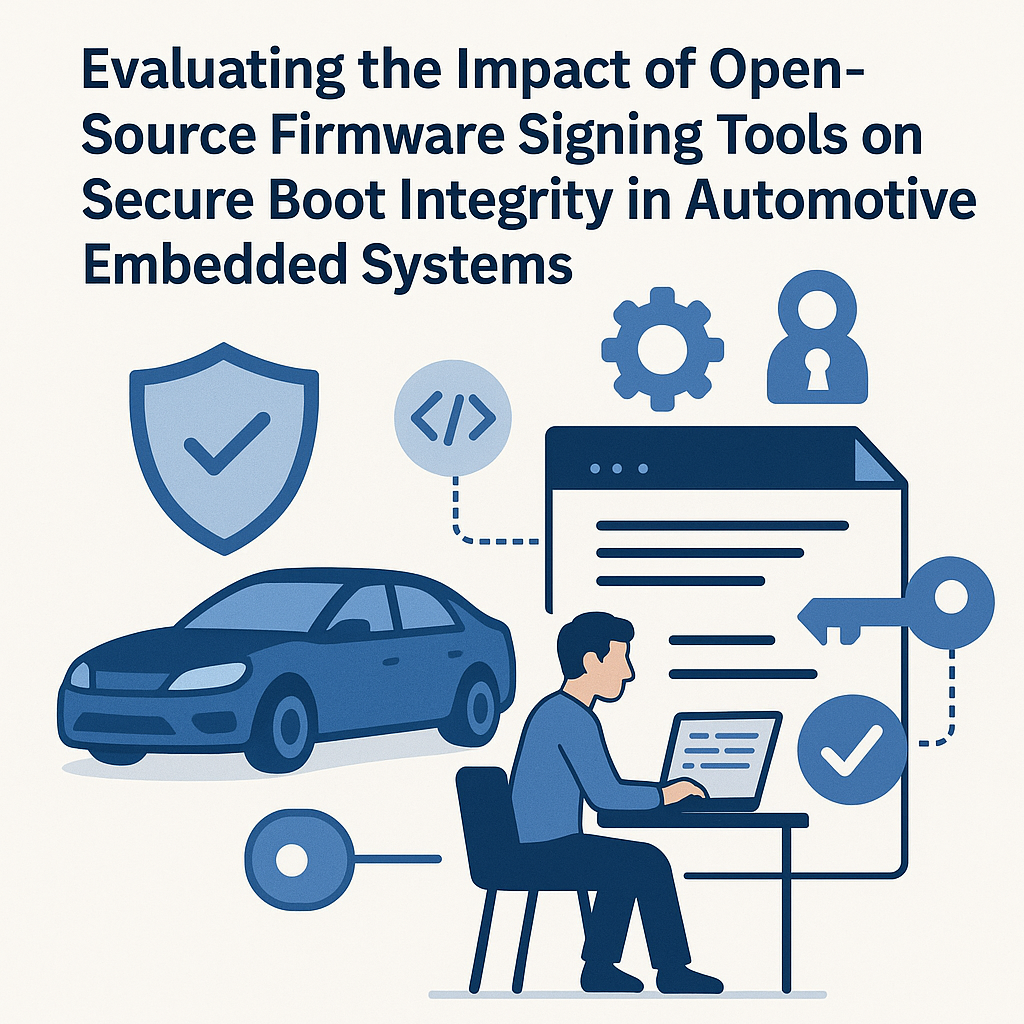Introduction
As the automotive industry evolves, ensuring the integrity and security of embedded systems has become paramount. One critical aspect of this security involves the implementation of secure boot processes. Open-source firmware signing tools are increasingly being utilized to enhance these processes, but their impact on secure boot integrity needs thorough evaluation. This article will discuss what secure boot is, the role of firmware signing tools, and how they influence the integrity of automotive embedded systems.
Understanding Secure Boot
Secure boot is a security standard that ensures that a device boots using only software that is trusted by the manufacturer. It operates by verifying the digital signatures of the firmware before loading it. If the verification fails, the device will not boot, thus preventing unauthorized code execution. This process is particularly vital in automotive systems, where safety and security are non-negotiable.
Key Functions of Secure Boot
- Integrity Verification: Ensures that only genuine firmware is executed.
- Malware Prevention: Protects against unauthorized modifications and malware.
- Trust Chain Establishment: Builds a chain of trust from hardware to software.
The Role of Open-Source Firmware Signing Tools
Open-source firmware signing tools have emerged as a popular choice for developers looking to implement secure boot processes. These tools are designed to facilitate the signing and verification of firmware, ensuring that only trusted code is executed during the boot process.
Advantages of Open-Source Tools
- Transparency: Being open-source allows for public scrutiny, which can lead to more secure implementations.
- Community Support: A vibrant community can contribute to the development and improvement of tools.
- Adaptability: Developers can modify the tools to suit specific needs and requirements.
Evaluating the Impact on Secure Boot Integrity
While open-source firmware signing tools offer many benefits, it is essential to evaluate their impact on secure boot integrity in automotive embedded systems. This evaluation can be broken down into several key areas:
1. Reliability of Signatures
The integrity of a secure boot process relies heavily on the reliability of the signatures used to verify firmware. Open-source tools often provide robust cryptographic algorithms, but the implementation must be flawless. Any vulnerability in the signing process can lead to severe security risks.
2. Update Mechanism
Automotive systems require regular updates to address security vulnerabilities and improve functionality. Open-source tools can simplify the update process by allowing easier integration of new signatures. However, the update process must maintain integrity, ensuring that updates are also signed and verified properly.
3. Compliance with Standards
Automotive embedded systems must adhere to strict safety and security standards, such as ISO 26262. Open-source firmware signing tools must be compliant with these standards to ensure that they do not introduce new vulnerabilities. Evaluating the compliance of these tools is crucial for maintaining secure boot integrity.
4. Performance Considerations
The signing and verification processes can introduce latency during boot-up. It’s vital to assess how open-source tools impact the performance of secure boot in automotive applications, as delays can affect user experience and system functionality.
5. Risk of Supply Chain Attacks
Utilizing open-source tools can expose organizations to supply chain attacks if not managed properly. If attackers gain access to the firmware signing process, they could potentially inject malicious code. Evaluating the security measures surrounding the use of these tools is essential to mitigate this risk.
Case Studies and Real-World Applications
To better understand the impact of open-source firmware signing tools, examining real-world applications can provide valuable insights. Several automotive manufacturers and suppliers have successfully integrated these tools into their secure boot processes.
- Case Study 1: A major automotive supplier implemented an open-source signing tool that significantly reduced the time to market for firmware updates while maintaining secure boot integrity.
- Case Study 2: Another manufacturer faced challenges when integrating an open-source tool, leading to vulnerabilities that were exploited. This case highlighted the importance of thorough evaluations and compliance checks.
Conclusion
Evaluating the impact of open-source firmware signing tools on secure boot integrity in automotive embedded systems is a complex yet necessary endeavor. While these tools offer transparency, community support, and adaptability, careful consideration must be given to their implementation, compliance, and potential risks. As the automotive landscape continues to evolve, so too must the strategies employed to ensure the security and integrity of embedded systems. The balance between leveraging open-source innovation and maintaining robust security measures will be crucial for the future of automotive safety.



